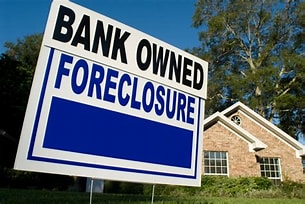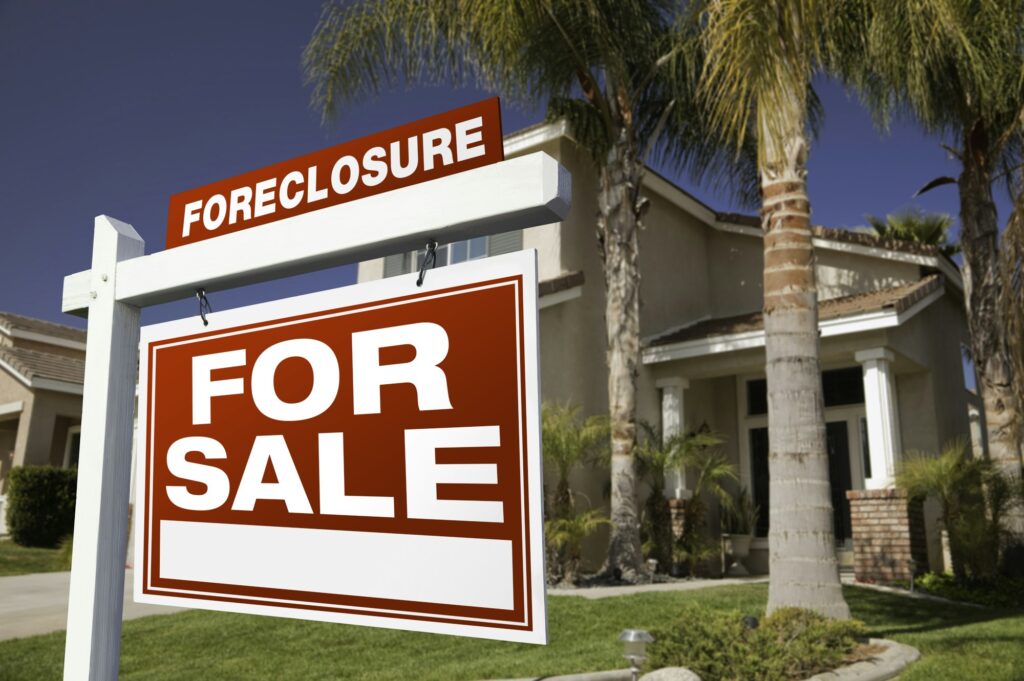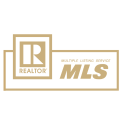Why Choose Venture REI for Residential Real Estate Investments
When it comes to residential real estate investments, choosing the right partner can make a significant difference in your success. Venture REI is the preferred resource for individuals looking to maximize their returns and navigate the world of real estate investment with confidence. Here are a few reasons why Venture REI stands out from the competition:
Expertise in Real Estate Investment
Venture REI brings a wealth of expertise in the field of real estate investment. With years of experience and a deep understanding of the industry, their team is well-equipped to guide investors on their journey to financial prosperity. As CGP Real Estate Consulting states, cash flow is one of the most important metrics for assessing the success of a rental property investment. Venture REI understands this and provides invaluable insights and strategies to help investors achieve positive cash flow and build wealth.
Comprehensive Resources and Tools
Investing in real estate requires access to comprehensive resources and tools to make informed decisions. Venture REI offers a wide range of resources, including articles, guides, and calculators, to assist investors in their quest for profitability. As BiggerPockets explains, key metrics for calculating rental property cash flow include gross rent, operating expenses, net operating income (NOI), cash flow, and cash-on-cash return. Venture REI provides these resources to empower investors with the knowledge they need to make sound financial decisions.
Proven Track Record of Success
At Venture REI, success is not just a promise; it’s a track record. With a proven history of helping investors achieve their financial goals, Venture REI has established itself as a trusted partner in the real estate investment industry. As Roofstock emphasizes, accurately calculating cash flow is the key to success for rental property investors. Venture REI’s expertise and guidance in cash flow analysis enable investors to make informed decisions and maximize their returns.
By choosing Venture REI as your preferred resource for residential real estate investments, you gain access to their expertise, comprehensive resources, and a proven track record of success. Whether you’re a seasoned investor or just starting your journey, Venture REI is committed to helping you achieve your financial goals through smart and profitable real estate investments.
The Importance of Calculating Rental Property Cash Flow
When it comes to real estate investing, calculating rental property cash flow is a crucial step in evaluating the profitability of an investment. Understanding the concept of cash flow in real estate and utilizing key metrics can help investors make informed decisions. It is also important to be aware of the factors that can affect rental property cash flow.
Understanding Cash Flow in Real Estate
Cash flow in real estate refers to the money that is left over after deducting expenses from the income generated by a rental property. It is a key indicator of the property’s profitability and can help investors determine the potential return on their investment. Positive cash flow occurs when the income from the property exceeds the expenses, while negative cash flow indicates that the expenses are higher than the income.
To calculate rental property cash flow, subtract the expenses from the income: Cash Flow = Income – Expenses. This calculation provides a clear picture of the financial performance of the property and whether it is generating a profit or a loss (Landlord Studio). Generally, a positive cash flow is considered desirable, as it indicates that the property is generating more income than expenses.
Key Metrics for Evaluating Cash Flow
Several key metrics can help evaluate the cash flow of a rental property:
- Gross Rent: This is the total rental income generated by the property. It is important to use the potential rental income when calculating cash flow, which represents the amount of rent that could be collected if the property was fully occupied and all tenants paid on time (CGP Real Estate Consulting).
- Operating Expenses: These include various expenses associated with owning and operating the property, such as mortgage payments, property taxes, insurance, maintenance and repairs, property management fees, and other related costs. It is crucial to accurately estimate these expenses to calculate an accurate cash flow figure (CGP Real Estate Consulting).
- Net Operating Income (NOI): This is the difference between the gross rent and the operating expenses. NOI represents the income generated by the property after deducting all the necessary expenses. It is a key metric used to assess the property’s profitability and cash flow potential.
- Cash Flow and Cash-on-Cash Return: Cash flow, as mentioned earlier, is the amount of money left after deducting expenses from the income. Cash-on-cash return is a metric that compares the cash flow to the initial investment made by the investor. It helps evaluate the return on investment and determine whether the property is a viable opportunity for generating profits.
Factors Affecting Rental Property Cash Flow
Several factors can impact rental property cash flow:
- Unexpected Expenses: Unexpected expenses such as maintenance costs, repairs, or legal fees can significantly affect cash flow. It is important to set aside funds for these expenses and conduct regular property inspections to identify any potential issues (Landlord Studio).
- Property Management Fees: If you choose to hire a property management company to handle the day-to-day operations of your rental property, their fees can impact cash flow. It is essential to consider these fees when calculating the potential cash flow of the property.
- Vacancies and Tenant Turnover: Vacancies and tenant turnover can lead to periods of no rental income, negatively impacting cash flow. It is important to have strategies in place to minimize vacancies and attract reliable tenants to ensure a steady stream of rental income.
By understanding the importance of calculating rental property cash flow and utilizing key metrics, investors can make informed decisions and assess the profitability of potential investments. It is crucial to consider the factors that can affect cash flow and plan accordingly to ensure a successful and profitable real estate investment.
How to Calculate Rental Property Cash Flow
To effectively analyze the cash flow of a rental property, it is important to calculate several key metrics. These metrics will provide a clear picture of the income and expenses associated with the property. By understanding these calculations, you can determine the profitability and potential return on your investment.
Gross Rent
Gross rent refers to the total rental income generated by the property. This includes the rent collected from all units or tenants. To calculate the gross rent, simply add up the monthly or annual rental income from all sources. It is important to use the potential rental income, which is the amount that could be collected if the property was fully occupied and all tenants paid on time (CGP Real Estate Consulting).
Operating Expenses
Operating expenses encompass all the costs associated with owning and operating the rental property. These expenses include mortgage payments, property taxes, insurance, maintenance and repairs, property management fees, and any other costs directly related to the property. It is crucial to consider all relevant expenses to accurately assess the cash flow of the property (CGP Real Estate Consulting).
Net Operating Income (NOI)
Net Operating Income (NOI) is a fundamental metric used to evaluate the financial performance of a rental property. It is calculated by subtracting the operating expenses from the gross rent. The formula for calculating NOI is:
NOI = Gross Rent - Operating Expenses
NOI represents the income generated from the property after deducting all operating costs. It provides a clear indication of the property’s profitability and cash flow potential. The higher the NOI, the more positive the cash flow will be.
Cash Flow and Cash-on-Cash Return
Cash flow is a crucial metric in rental property analysis as it measures the amount of money that is left over after deducting operating expenses from the gross rent. It represents the actual cash in hand that can be used for various purposes, such as mortgage payments, property improvements, or personal income.
To calculate cash flow, subtract the operating expenses from the gross rent. A positive cash flow indicates that the rental property is generating more income than it costs to operate, while a negative cash flow means that the property expenses exceed the rental income. Positive cash flow is generally desired for a profitable rental property (CGP Real Estate Consulting).
Cash-on-Cash Return is another essential metric that measures the return on investment for a rental property. It compares the cash flow to the amount of cash invested in the property. The formula for calculating Cash-on-Cash Return is:
Cash-on-Cash Return = Annual Cash Flow ÷ Total Cash Invested × 100
This metric helps assess the profitability of the investment and is particularly useful for comparing different investment opportunities.
By calculating and analyzing these key metrics, you can gain valuable insights into the cash flow potential of a rental property. These calculations serve as a foundation for evaluating the financial viability and profitability of your investment.
Evaluating Rental Property Cash Flow
When it comes to assessing the financial viability of a rental property, evaluating the cash flow is crucial. There are several key metrics that can help you determine the potential profitability and return on investment of a rental property. In this section, we will explore the 1% rule, Gross Rent Multiplier (GRM), Return on Investment (ROI), and Cap Rate.
The 1% Rule
The 1% rule is a general guideline used by real estate investors to evaluate rental property cash flow. According to this rule, the monthly rental income should be at least 1% of the property’s purchase price. If the property meets this rule, it has a good chance of generating positive cash flow (Mashvisor).
For example, if you are considering a rental property with a purchase price of $200,000, the monthly rental income should ideally be $2,000 or more to meet the 1% rule. This rule provides a quick initial assessment of a property’s cash flow potential.
Gross Rent Multiplier (GRM)
The Gross Rent Multiplier (GRM) is another key metric used to evaluate rental property cash flow. It is calculated by dividing the property’s sale price by the annual rental income. A lower GRM indicates a better cash flow potential. The GRM can be useful for comparing the profitability of different rental properties (Mashvisor).
For example, if a property is priced at $300,000 and generates an annual rental income of $30,000, the GRM would be 10. This means that it would take approximately 10 years of rental income to recoup the purchase price of the property.
Return on Investment (ROI)
Return on Investment (ROI) is a fundamental metric for evaluating rental property cash flow. It measures the return generated by an investment relative to the total investment cost. ROI is calculated by dividing the property’s net profit by the total investment cost. A higher ROI indicates a better return on investment.
To calculate ROI, subtract the property’s operating expenses from the gross rental income to determine the net profit. Then, divide the net profit by the total investment cost, including the purchase price and any renovation or improvement expenses.
Cap Rate
Cap Rate (Capitalization Rate) is a metric used to assess the potential return on a rental property investment. It is calculated by dividing the property’s Net Operating Income (NOI) by its purchase price. The Cap Rate represents the property’s expected annual return as a percentage of the purchase price. A higher Cap Rate indicates a better cash flow potential.
To calculate the Cap Rate, subtract the property’s operating expenses from the annual rental income to determine the NOI. Then, divide the NOI by the purchase price of the property.
The 1% rule, Gross Rent Multiplier (GRM), Return on Investment (ROI), and Cap Rate are key metrics for evaluating rental property cash flow. These metrics provide insights into the property’s potential profitability and return on investment. It’s important to analyze these metrics in conjunction with other factors such as location, market conditions, and potential risks to make informed investment decisions. For more information about rental property cash flow analysis and other residential real estate investment strategies, consider exploring the resources and expertise provided by Venture REI.
Factors Affecting Rental Property Cash Flow
When analyzing the cash flow of a rental property, it’s important to consider various factors that can impact its profitability. Unexpected expenses, property management fees, and vacancies and tenant turnover are among the key factors that can affect rental property cash flow.
Unexpected Expenses
Unexpected expenses can have a significant impact on rental property cash flow. These expenses can arise from various sources, such as maintenance costs, repairs, legal fees, or unforeseen emergencies. It’s crucial for property owners to have a contingency fund set aside to cover these unexpected expenses and ensure they don’t drain the cash flow.
To mitigate the impact of unexpected expenses, conducting regular property inspections and implementing preventive maintenance measures can help identify and address issues before they escalate. Additionally, working with a reliable and responsive network of contractors and service providers can help minimize the financial burden of unexpected repairs.
Property Management Fees
Property management fees are another consideration that can affect rental property cash flow. Hiring a property management company can provide numerous benefits, such as handling tenant screening, rent collection, property maintenance, and legal compliance. However, these services come at a cost.
Property management fees typically range from 8% to 12% of the monthly rent, depending on the location and level of services provided. While property management can relieve landlords of day-to-day responsibilities, it’s crucial to factor in these fees when calculating cash flow. As an alternative, some landlords choose to self-manage their properties to reduce expenses, but this requires additional time and effort.
Vacancies and Tenant Turnover
Vacancies and tenant turnover can significantly impact rental property cash flow. When a unit sits vacant, there is no rental income to offset the property expenses. Additionally, tenant turnover can result in expenses such as advertising for new tenants, cleaning, and repairs to prepare the unit for the next occupant.
Minimizing vacancies and tenant turnover is essential for maintaining a healthy cash flow. Effective strategies include providing quality living conditions, promptly addressing tenant concerns, offering competitive rental rates, and fostering positive landlord-tenant relationships. Conducting regular market research to ensure rental rates remain competitive can also help attract and retain tenants.
By understanding and accounting for these factors, real estate investors can make informed decisions and more accurately assess the potential cash flow of a rental property. It’s important to evaluate the financial viability of an investment by considering all the relevant expenses and potential risks. Working with a reputable property management company and being prepared for unexpected expenses can help mitigate the impact on cash flow and maximize the profitability of rental property investments.
The Benefits of Positive Cash Flow
Positive cash flow is a critical factor for success in rental property investments. It not only allows landlords to cover expenses but also generates profit and builds long-term wealth. Let’s explore some of the key benefits of positive cash flow in residential real estate investments.
Generating Profit and Building Wealth
Positive cash flow provides a steady stream of income from your rental property. By earning more rental income than the expenses incurred, you have the opportunity to generate profit and build wealth over time. This profit can be reinvested into additional properties or used to diversify your investment portfolio. The consistent income from positive cash flow helps to create a sustainable investment strategy, allowing you to achieve financial goals and secure your future.
Scalability and Growth Opportunities
Having positive cash flow opens the door to scalability and growth opportunities in the real estate industry. With the ability to cover expenses and generate profit, you can reinvest the surplus funds to acquire more properties. This expansion can lead to increased rental income and a larger portfolio, ultimately accelerating your wealth-building journey. Positive cash flow enables you to leverage your investments and take advantage of opportunities for further growth.
Real Estate Investment Security
Positive cash flow provides a sense of security in your real estate investments. It acts as a financial buffer, allowing you to navigate unexpected expenses, vacancies, or economic downturns. When your rental property consistently generates more income than it costs to operate, you have a safety net to handle unforeseen circumstances. This financial stability enhances your overall investment strategy and minimizes the risks associated with property ownership.
By focusing on positive cash flow, you can ensure the financial success of your residential real estate investments. It allows you to generate profit, pursue growth opportunities, and secure your investments for the long term. By partnering with Venture REI, you gain access to expert guidance and resources that can help you maximize your rental property cash flow and achieve your financial goals.
How to Calculate Rental Property Cash Flow
Gross Rent
Operating Expenses
Net Operating Income (NOI)
Cash Flow and Cash-on-Cash Return
Calculating rental property cash flow is essential for assessing the financial performance and profitability of an investment. It involves evaluating the income generated by the property and subtracting the associated expenses. Let’s explore the key steps involved in this process.
Gross Rent
The first step in calculating rental property cash flow is determining the gross rent, which is the total income generated by the property. This includes the rental income from all units or properties. To estimate the potential rental income accurately, consider the market rates for similar properties in the area. It’s important to note that the gross rent should reflect the potential income if the property was fully occupied and all tenants paid on time (CGP Real Estate Consulting).
Operating Expenses
Operating expenses are the costs associated with owning and operating the rental property. These expenses can include:
- Mortgage payments
- Property taxes
- Insurance
- Maintenance and repairs
- Property management fees
- Utilities
- Vacancy costs
- Other relevant expenses
To accurately calculate rental property cash flow, it’s important to consider all expenses associated with the property. These expenses may vary depending on factors such as property size, location, and the services provided by property management (CGP Real Estate Consulting).
Net Operating Income (NOI)
The net operating income (NOI) is calculated by subtracting the operating expenses from the gross rent. The NOI represents the income generated by the property after deducting the costs associated with its operation. It provides a clearer picture of the property’s financial performance.
| Gross Rent | $2,500 |
| Operating Expenses | $1,000 |
| Net Operating Income (NOI) | $1,500 |
Cash Flow and Cash-on-Cash Return
Cash flow is the final step in calculating rental property cash flow. It is determined by subtracting any additional expenses, such as mortgage payments or interest, from the NOI. A positive cash flow indicates that the property is generating more income than it costs to operate, while a negative cash flow means that the property expenses exceed the rental income (PayRent).
| NOI | $1,500 |
| Additional Expenses | $700 |
| Cash Flow | $800 |
Cash-on-cash return is another important metric to consider. It measures the return on the actual cash invested in the property. It is calculated by dividing the annual cash flow by the total cash investment. This metric provides a percentage that reflects the return on investment based on the amount of cash put into the property.
To calculate cash-on-cash return, divide the annual cash flow by the total cash investment and multiply by 100:
Cash-on-Cash Return = (Cash Flow / Total Cash Investment) * 100
Evaluating rental property cash flow is crucial for determining the financial viability of an investment. By analyzing these key metrics, such as cash flow and cash-on-cash return, investors can make informed decisions and assess the profitability of rental properties.








